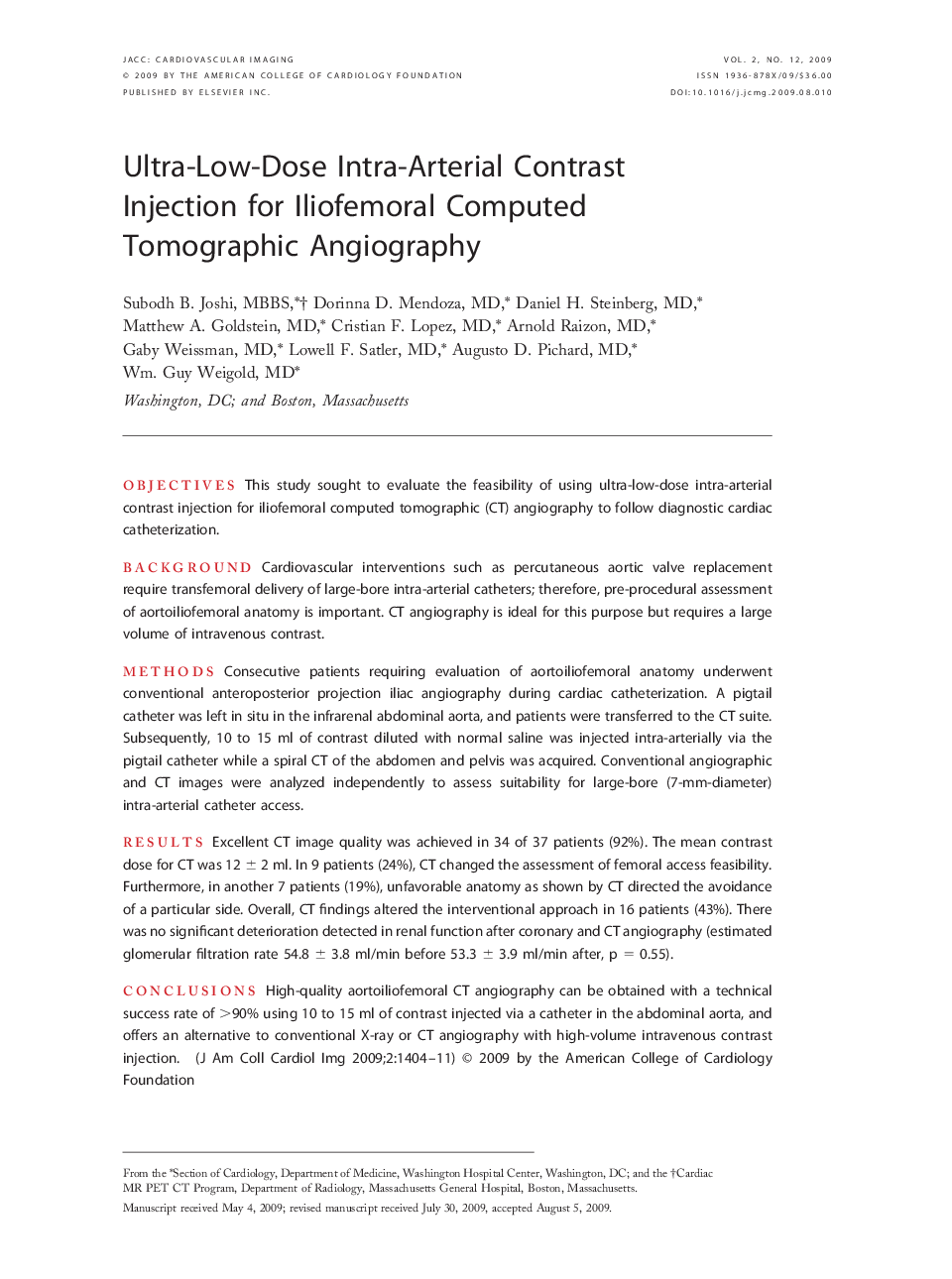| Article ID | Journal | Published Year | Pages | File Type |
|---|---|---|---|---|
| 2938990 | JACC: Cardiovascular Imaging | 2009 | 8 Pages |
ObjectivesThis study sought to evaluate the feasibility of using ultra-low-dose intra-arterial contrast injection for iliofemoral computed tomographic (CT) angiography to follow diagnostic cardiac catheterization.BackgroundCardiovascular interventions such as percutaneous aortic valve replacement require transfemoral delivery of large-bore intra-arterial catheters; therefore, pre-procedural assessment of aortoiliofemoral anatomy is important. CT angiography is ideal for this purpose but requires a large volume of intravenous contrast.MethodsConsecutive patients requiring evaluation of aortoiliofemoral anatomy underwent conventional anteroposterior projection iliac angiography during cardiac catheterization. A pigtail catheter was left in situ in the infrarenal abdominal aorta, and patients were transferred to the CT suite. Subsequently, 10 to 15 ml of contrast diluted with normal saline was injected intra-arterially via the pigtail catheter while a spiral CT of the abdomen and pelvis was acquired. Conventional angiographic and CT images were analyzed independently to assess suitability for large-bore (7-mm-diameter) intra-arterial catheter access.ResultsExcellent CT image quality was achieved in 34 of 37 patients (92%). The mean contrast dose for CT was 12 ± 2 ml. In 9 patients (24%), CT changed the assessment of femoral access feasibility. Furthermore, in another 7 patients (19%), unfavorable anatomy as shown by CT directed the avoidance of a particular side. Overall, CT findings altered the interventional approach in 16 patients (43%). There was no significant deterioration detected in renal function after coronary and CT angiography (estimated glomerular filtration rate 54.8 ± 3.8 ml/min before 53.3 ± 3.9 ml/min after, p = 0.55).ConclusionsHigh-quality aortoiliofemoral CT angiography can be obtained with a technical success rate of >90% using 10 to 15 ml of contrast injected via a catheter in the abdominal aorta, and offers an alternative to conventional X-ray or CT angiography with high-volume intravenous contrast injection.
